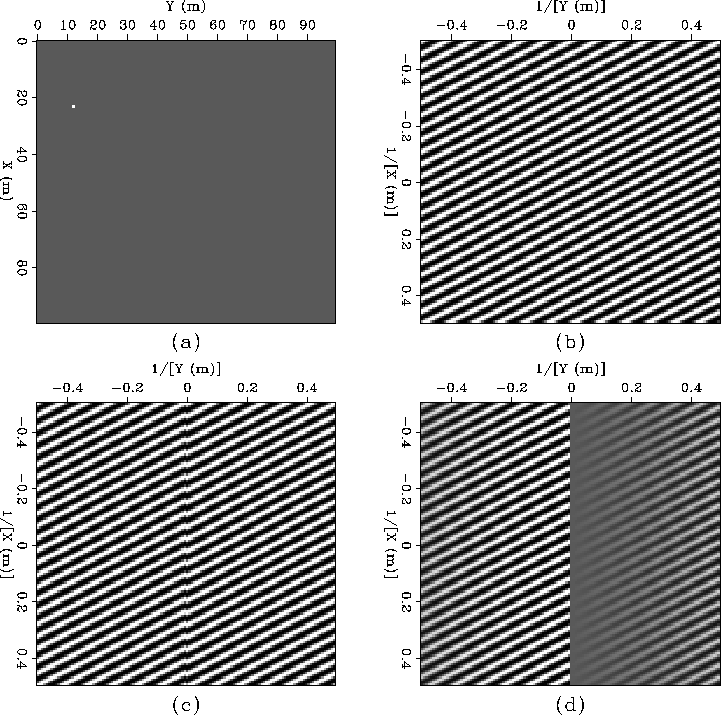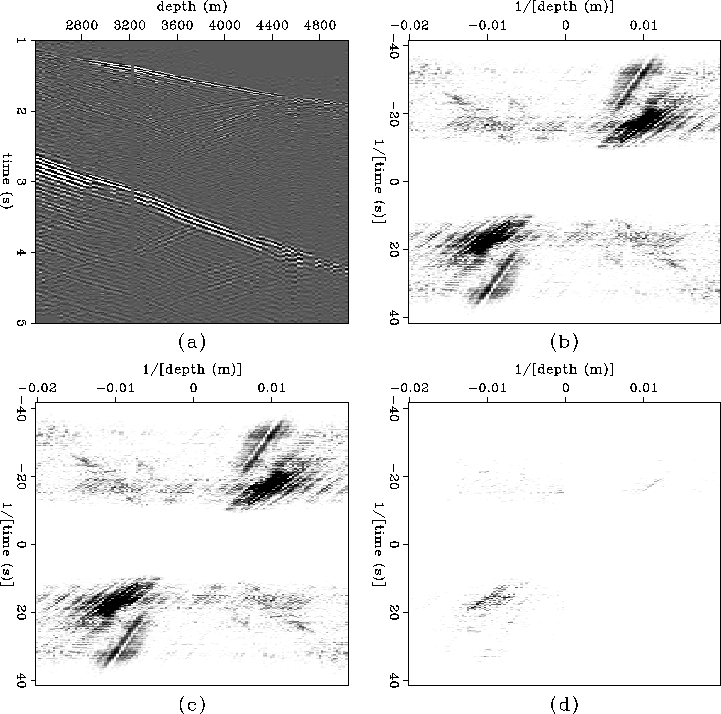




Next: Application to the multiple
Up: Rickett & Guitton: Helical
Previous: Speed comparison
Figure 4 compares the real part of the 2-D Fourier
transform of a single spike with the equivalent real part after a 1-D
FFT in helical boundary conditions. The Fourier transforms are
centered, so that zero frequency is at the center of the plot. This
has the effect that the artifacts that would appear at the vertical
boundaries (ky=0) of the image are more visible since they appear
at the center of the plot.
Figure 5 compares amplitude spectra for a broader
band 2-D seismic VSP gather. Artifacts from the helical boundaries
are very difficult to see on the spectra themselves, and the
difference image is very low amplitude.
spikespec
Figure 4 Comparison of real part of 2-D
spectra: (a) input spike (single frequency), (b) real part of
2-D FFT, (c) real part of 1-D helical FFT, and (d)
difference between (b) and (c) clipped to same level.
![[*]](http://sepwww.stanford.edu/latex2html/movie.gif)




 schlumspec
schlumspec
Figure 5 Comparison of 2-D amplitude
spectra: (a) input 2-D VSP gather, (b) amplitude spectrum from
2-D FFT, (c) amplitude spectrum from 1-D helical FFT, and (d)
difference between (b) and (c) clipped to same level.
![[*]](http://sepwww.stanford.edu/latex2html/movie.gif)










Next: Application to the multiple
Up: Rickett & Guitton: Helical
Previous: Speed comparison
Stanford Exploration Project
9/5/2000

![[*]](http://sepwww.stanford.edu/latex2html/movie.gif)

![[*]](http://sepwww.stanford.edu/latex2html/movie.gif)

![[*]](http://sepwww.stanford.edu/latex2html/movie.gif)